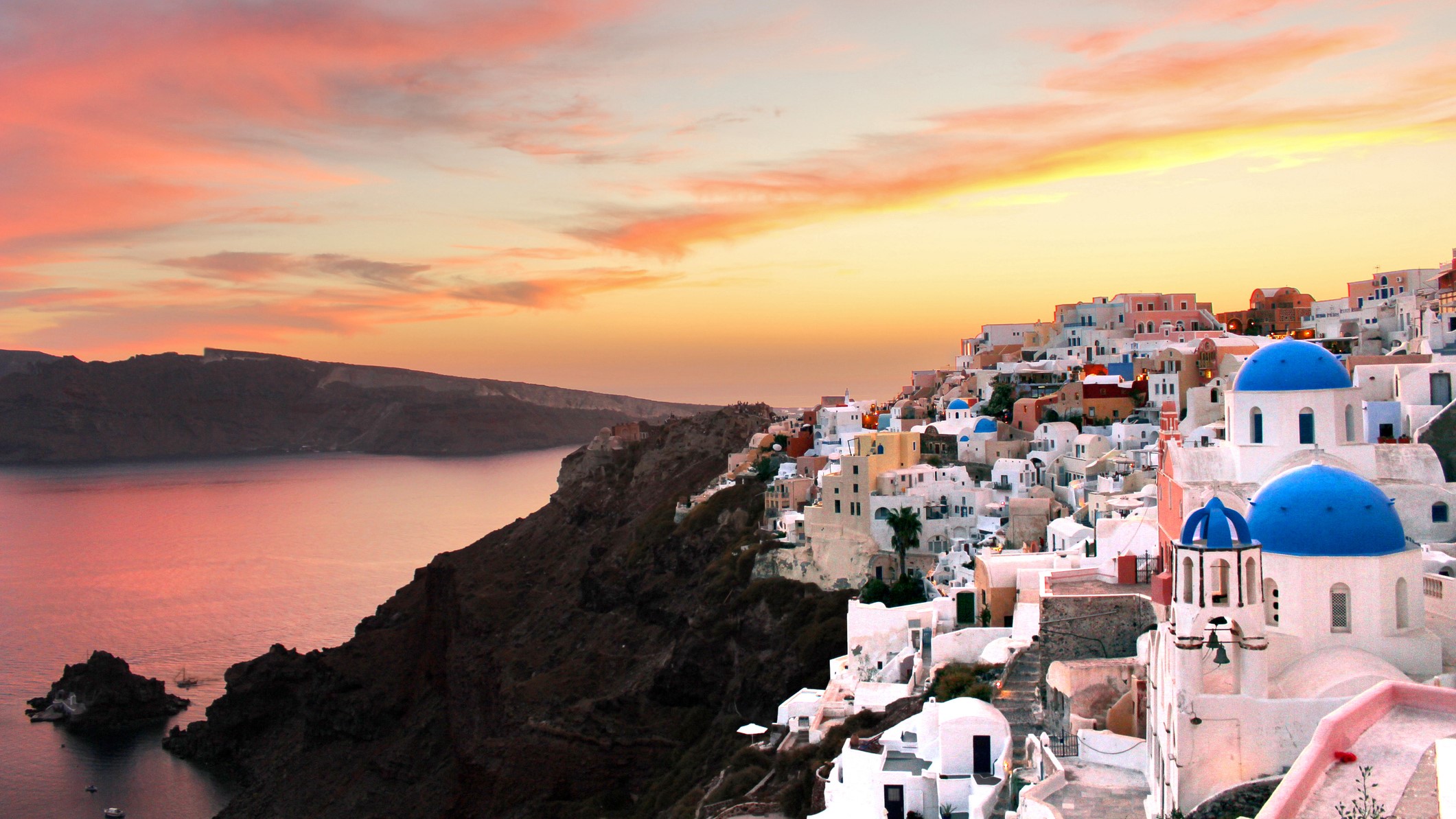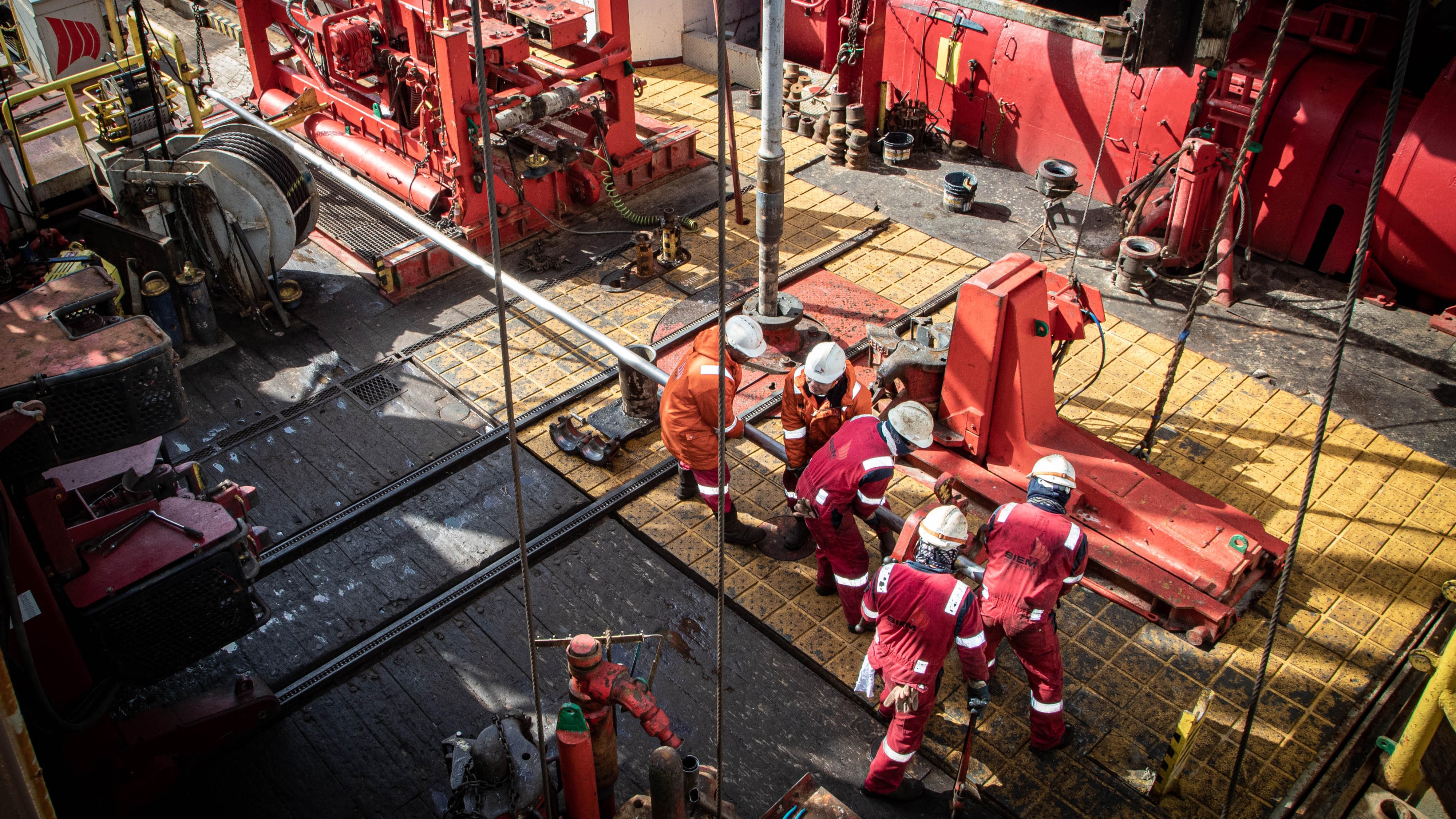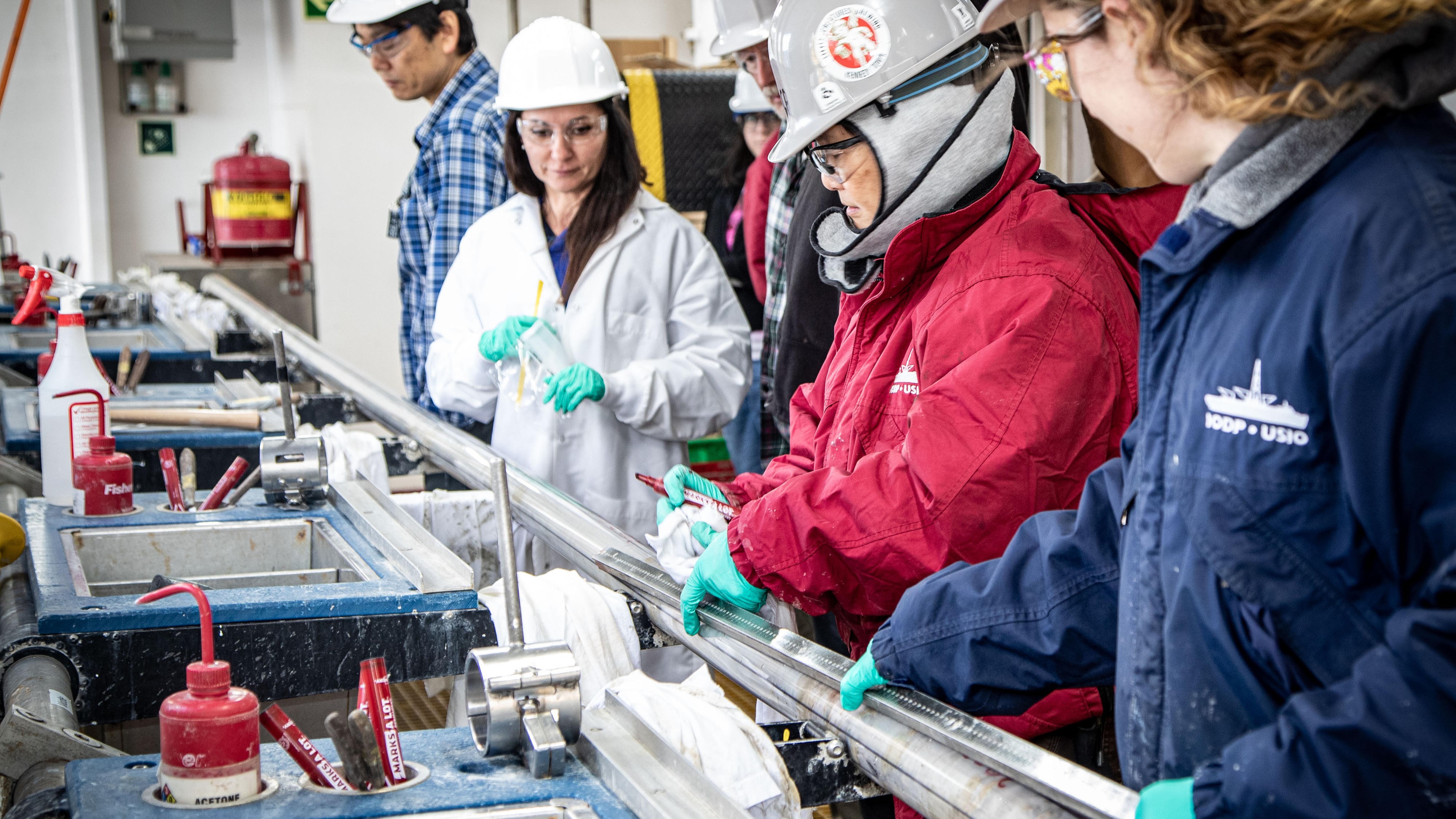The sea 'began to boil': Freak volcanic eruption of Santorini 1,300 years ago indicates huge blasts can occur during time of quiet
A giant layer of pumice and ash found buried underwater in the Santorini caldera indicates an eruption in A.D. 726 was much bigger than previously thought.

An eruption at Santorini volcano 1,300 years ago was far larger than previously thought, suggesting explosive blasts can occur even in periods of relative quiet, new research shows.
Santorini is an underwater volcano located along a string of volcanoes known as the Hellenic Island Arc between Greece and Turkey. It can produce eruptions that are so extreme the crust above the magma chamber collapses and forms a bowl-shaped pit, or caldera, several miles across. The last caldera-forming eruption at Santorini, known as the Minoan eruption, occurred in 1600 B.C. and blew the top off what was then one island, leaving behind the present-day archipelago.
Eruptions of this scale are typically followed by a "rejuvenation" period, during which the magma chamber replenishes and feeds only small eruptions. But a huge explosion in the year A.D. 726 has scientists rethinking how the volcano behaves during quiet periods, according to a study published Monday (March 25) in the journal Nature Geoscience.
"Historical accounts mention that, during the summer of 726 C.E., the sea within the Santorini caldera began to boil until dense smoke rose and was accompanied by pyroclastic eruptions," researchers wrote in the study. (Pyroclastic eruptions are characterized by flows of blistering ash, gas and rock.) "Large pumice blocks were ejected in such quantity that they covered the sea over an immense area, reaching the coasts of Macedonia and Asia Minor more than 400 km [kilometers, or 250 miles] away."
While these descriptions hint at a huge explosion, the only trace of this eruption previously found was a thin layer of pumice on Palea Kameni — one of two islands that sit in the center of the Santorini caldera, where a vent called the Kameni volcano opened up following the Minoan eruption.
Now, scientists have gleaned the full extent of the 726 eruption and found that it likely blasted from the Kameni vent with a magnitude similar to that of the record-shattering Tonga volcano eruption of 2022, according to the study.
Get the world’s most fascinating discoveries delivered straight to your inbox.
To find out more about the eruption, the researchers drilled at different sites around the Kameni vent. The sediment cores they collected revealed a thick layer of pumice and ash, indicating the eruption ejected 0.7 cubic miles (3.1 cubic kilometers) of material — roughly the equivalent of 1 million Olympic swimming pools. Scientists didn't expect to find evidence of such a powerful eruption just 2,300 years after a caldera-forming eruption. The finding suggests the Santorini caldera is capable of exploding when it should — theoretically — be recharging, according to the study.
"Our finding that the Santorini caldera is capable of producing large explosive eruptions at an early stage in the caldera cycle implies an elevated hazard potential for the eastern Mediterranean region," the researchers wrote.
The Kameni volcano vent last erupted in 1950, producing small explosions and lava flows. It has since been dormant, except for a phase of unrest between 2011 and 2012, when satellites picked up telltale signs of magma moving beneath the volcano.
The thin layer of pumice on Palea Kameni island indicated the 726 eruption had a magnitude between 3 and 4 on the Volcanic Explosivity Index, which was until now considered a worst-case scenario for the Kameni volcano vent.
The new results, however, indicate the eruption was a magnitude 5 event, which is 10 to 100 times bigger than previously thought. "A similar eruptive event today would have severe consequences not only for the inhabitants of Santorini and its neighboring islands but also for the broader eastern Mediterranean," the researchers wrote in the study.
Editor's note: The headline and article were corrected at 6 a.m. ET on March 26, 2024, to remove references to the eruption being as violent as the 2022 Tonga event. The eruption was of the same order of magnitude as the 2022 Tonga event.

Sascha is a U.K.-based staff writer at Live Science. She holds a bachelor’s degree in biology from the University of Southampton in England and a master’s degree in science communication from Imperial College London. Her work has appeared in The Guardian and the health website Zoe. Besides writing, she enjoys playing tennis, bread-making and browsing second-hand shops for hidden gems.




